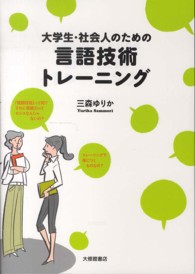Description
(Text)
This book is a practical guide for candidates on how to tackle the opposition paper C of the European Qualifying Examination (EQE), one of the more difficult papers judging by the overall results. It also provides qualified European patent attorneys with useful information on how to write, or defend against, an opposition, in particular the general practice at the EPO regarding the analysis of documents and possible approaches for drafting novelty and inventive step objections.
The book tackles the problems of time-management, claim and document analysis, choosing the correct attacks and the argumentation required in the notice of opposition in the context of two alternative methodologies for solving paper C. The first is the well-known table with claim features against the prior art documents, which over the years seems to work less and less satisfactorily. The second is the »CEIPI« method with a written analysis of each claim on sheets of paper, useful for the noticeof opposition. This method is specially adapted to paper C as it has developed over time.
Further chapters describe the important topics of priority, interpretation, state of the art, inventive step, added subject-matter and ranges. For each topic, the authors first give references to relevant legal sources, then they explain the topic from the point of view of opposition/paper C, and finally they give examples from past papers, as exercise material. Throughout the book, the authors point out the interconnections between these topics, the methodologies and the argumentation required in the notice of opposition, especially for inventive step attacks. The book also includes a collection of the legal points that have come up in past papers, sorted by theme. The appendices contain a worked example of paper C 2010 as well as useful templates for candidates, including a notice of opposition in English, French and German.
Revised and updated:
Fully revised chapter on the methods to tackle Paper C.Fully revised chapters in the light of more recent examination papers, the latest guidelines for examination and the revised implementing provisions for the EQE as of 2013.Updated exam paper (C 2010)Contains standard phrases for the Notice of Opposition in all three official languages (EN, FR, DE)Contains the model solution for C 2010 and its supporting documents in all three official languages (English, French and German)More information on examination strategyUpdate for all the Guidelines changes since 2016 (kept up to date every year with corrigenda-sheets)Update for all the C papers since 2016Update for latest G decisions important for paper CShortcuts in the Ceipi method, if time is running shortStandard phrases have been reviewed and updated in all three languagesHow to mark up the documents of the C paper to more easily find back te required informationExplanation of hidden independent claimsUpdate on interpretation of claimsSpecial topics of interest in real life oppositionNew material on prior use and oral disclosureIssues with the validity of priority of a document cited against the patentUpdate for inventive step attacks according to the most recent C papers:
- What to do with more than one possible closest prior art
- Mix of technical and non-technical features and inventive step
- Change necessary in closest prior art because the purpose of the invention changes from one claim to the next
Contains the model solution for C 2010 and its supporting documents in all three official languages (English, French and German)
Edited by:
William E. Chandler, Chairman of a Technical Board of Appeal of the EPO and Hugo Meinders, former Chairman of a Techn
(Text)








